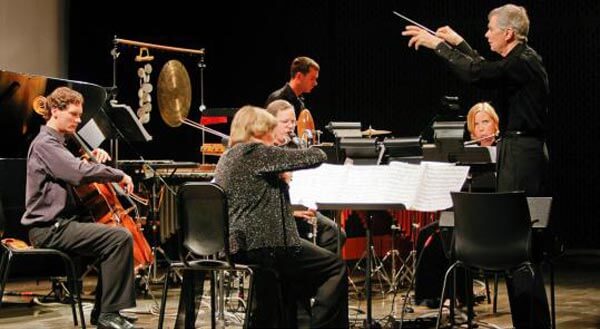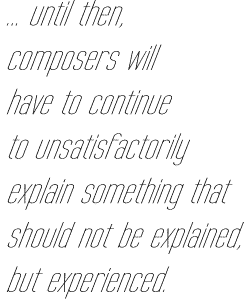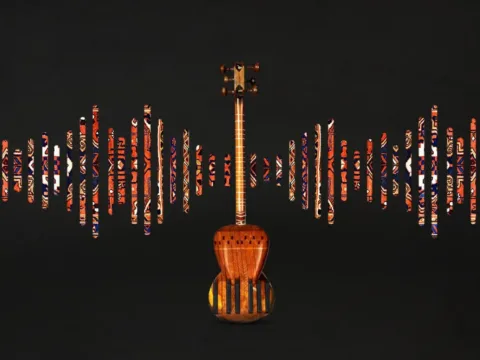Boston Musica Viva | Part 1: The Preservationist
Last November, I began this post with the intention of writing a (double) review of two concerts in the Boston area. In this two part series I comparatively investigate Boston Musica Viva‘s Allusions (November 16) and Sound Icon‘s Les Aventures Spectrales (November 17). This investigation reveals distinct curatorial choices like the presentation of program, musical content, and interaction(s) with audiences. Both concerts, despite their unique differences, maintain similar ritualistic underpinnings of classical art music concert experience. Yet the programming within both concerts reveals two historically omnipresent, albeit distinct, ideals of preservationism and progressivism. Although this dichotomy is not new to “new-music-writ-large,” let alone the music histories with their very core narrative circulating mercurially and gradually between these poles, but given the constant ebb and flow within the concert structure of contemporary music, a moment of self-examination and close reading may be beneficial for performers, composers, critics, and audiences.

Both concerts shared that certain element of seriousness that comes from the long—and nearly sacred—tradition of concert music ritual that is further enhanced by the cultural (mis)understanding(s) of contemporary music. What is more sacred than the ineffability of music becoming even more “ineffabilized”? To many, that’s what modern music does. Combine this (self)seriousness with a self-consciousness of a potential audience of “outsiders,” and there has to be something to bridge this yawning chasm of cultural division: a tight rope. That rope comes in the form of interacting with a “real living” composer. As a composer (and I can speak for many of my colleagues) I am not nearly as adept at tightrope walking, as the conductor cum artistic director and audience member would hope me to be. This awkwardness was apparent when an audience member asked the composer, during the Q&A at the Sound Icon concert, “how can I better understand the next piece (Voi (Rex))?” To which Philippe Leroux replied, in a half-joking posture of self-deprecation, “the second piece is worse.” Or, in the Boston Musica Viva concert where Boston-based composer Curtis K. Hughes graciously explained the conceptual background of his piece Verbiage while drawing attention to the redundancy of the situation through saying that “most of this is already in the program.” Granted, these are all gestures of good will from the programmers (insiders) to the audience (outsiders), but they have become so much a part of the concert ritual (when composers are present) that both the acts of mediation (performance) by the performer(s) and reception (interpretation) by the audience are unfairly prescribed: the audience expects to hear what the composer intended to write (as illustrated through the program notes and pre-performance speechifying), and with so much knowledge a priori to the actual musical experience, they may unfairly expect the performers to play according to that prescription.  This tradition does not seem to be going away any time soon. And until then, composers will have to continue to unsatisfactorily explain something that should not be explained, but experienced.
This tradition does not seem to be going away any time soon. And until then, composers will have to continue to unsatisfactorily explain something that should not be explained, but experienced.
Although found in both, this preservation of concert ritual seemed to be the only connective tissue between the two concerts. It was exactly 100 years and 1 month after the premiere of Pierrot Lunaire and Schoenberg’s ghost still haunts and taunts the concert halls. Although, “late” to the birthday, Richard Pittman and Boston Musica Viva obliquely paid homage to Schoenberg’s masterpiece while acting as atypical museum curators. One wing housed the dusty masterpiece of Schoenberg’s Suite, Op. 29 where three interloping clarinets battled with the traditional piano quartet in a rousing world of purposeful, yet resistant homage to tradition. After a brief, nearly hagiographical lecture, on Schoenberg and his legacy, Pittman herded in the scattered and clunky motives to possess a certain musicality that nearly willed itself to the surface, but ultimately could not rise above the inexorable mess that is inherent to the piece. Residing in a semi-permanent gallery was Settings from Pierrot Lunaire by William Kraft. The work exceeded the obvious allusions to Schoenberg’s magnum opus into a mini-world of operatic dimensions. Kraft’s attention to detailed orchestration and balance created a thrilling labyrinth of grotesquery tempered by chilling beauty. Sarah Pelletier’s (soprano) performance went beyond the stifled stuff of chamber music and into the unbridled dramatics of theater. All the while, the veteran that he is, Pittman commanded the ensemble with calm precision. The concert opened with what can be best described as the unique, traveling exhibition that speaks to our time. Curtis K. Hughes piece Verbiage used the speech/pitch patterns of current and, thankfully, recently past political figures, as his major compositional material. These pattering shards stubbornly resisted cohesion throughout the piece often resulting in multiple layers of indistinguishable chatter. Yet out of this undulating kaleidoscope came a striking, albeit brief, moment of consensus where all the instruments played in unison a rising pattern of sixteenth notes, only to give way into the previously explored textures. What was more striking is how much Hughes himself fits within the preservationist ideal that is seemingly unique to new music curating: young(ish) and local. By constantly reiterating the past while giving some space for what is new, Boston Musica Viva has survived 44 years of programming, recording, and performing. What adds to this preservationism is the “audience survey” missive inside each program. This crowd sourcing gesture allows the audience to feel like an active part of the curatorial process, which really creates a loyal and aging fan base. Given the concert attendance, it would seem to be dwindling.
—
Christian Gentry is a composer, lecturer, sound collector, and writer in the Boston area. Follow him on twitter: @klangfarben.
























